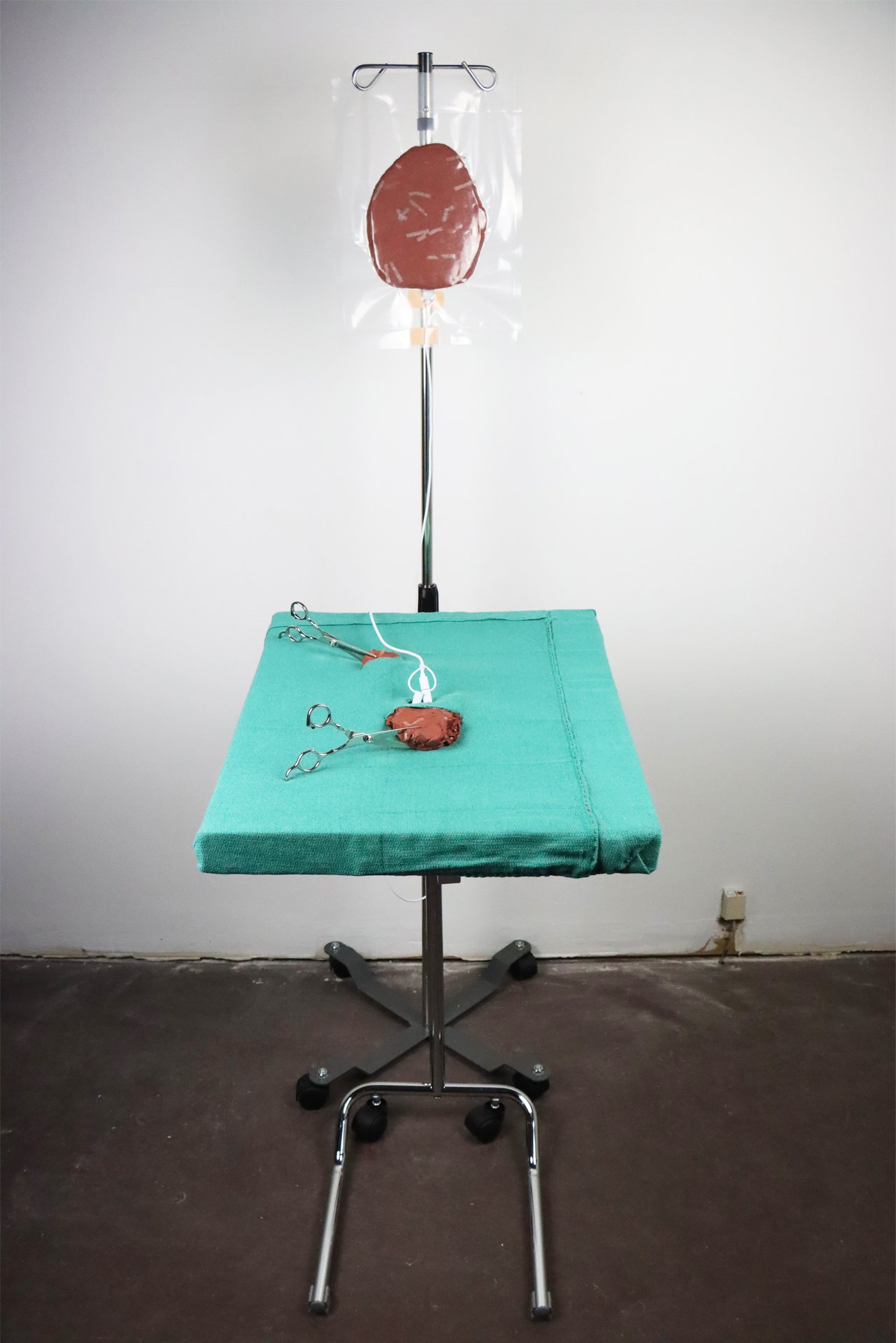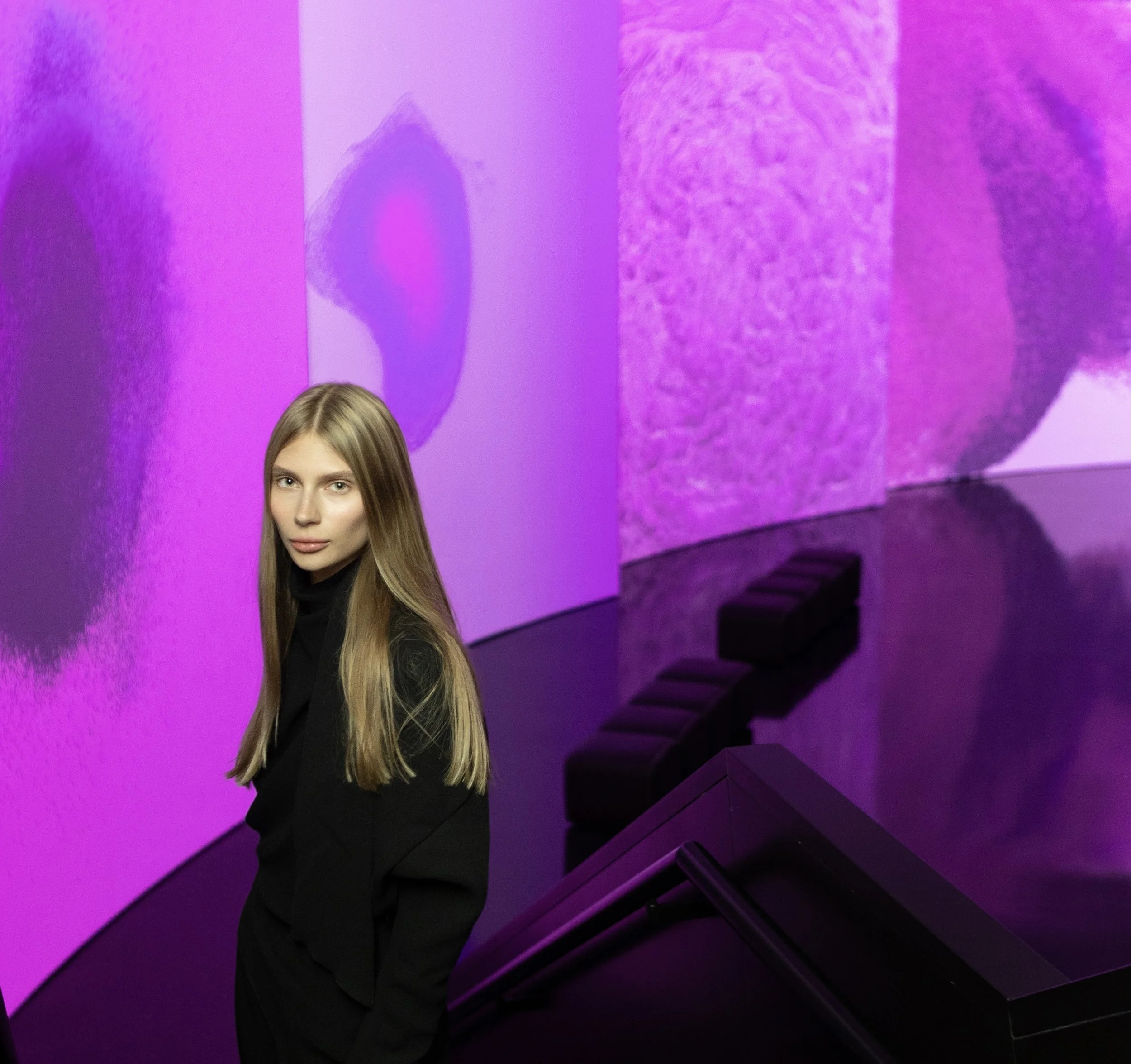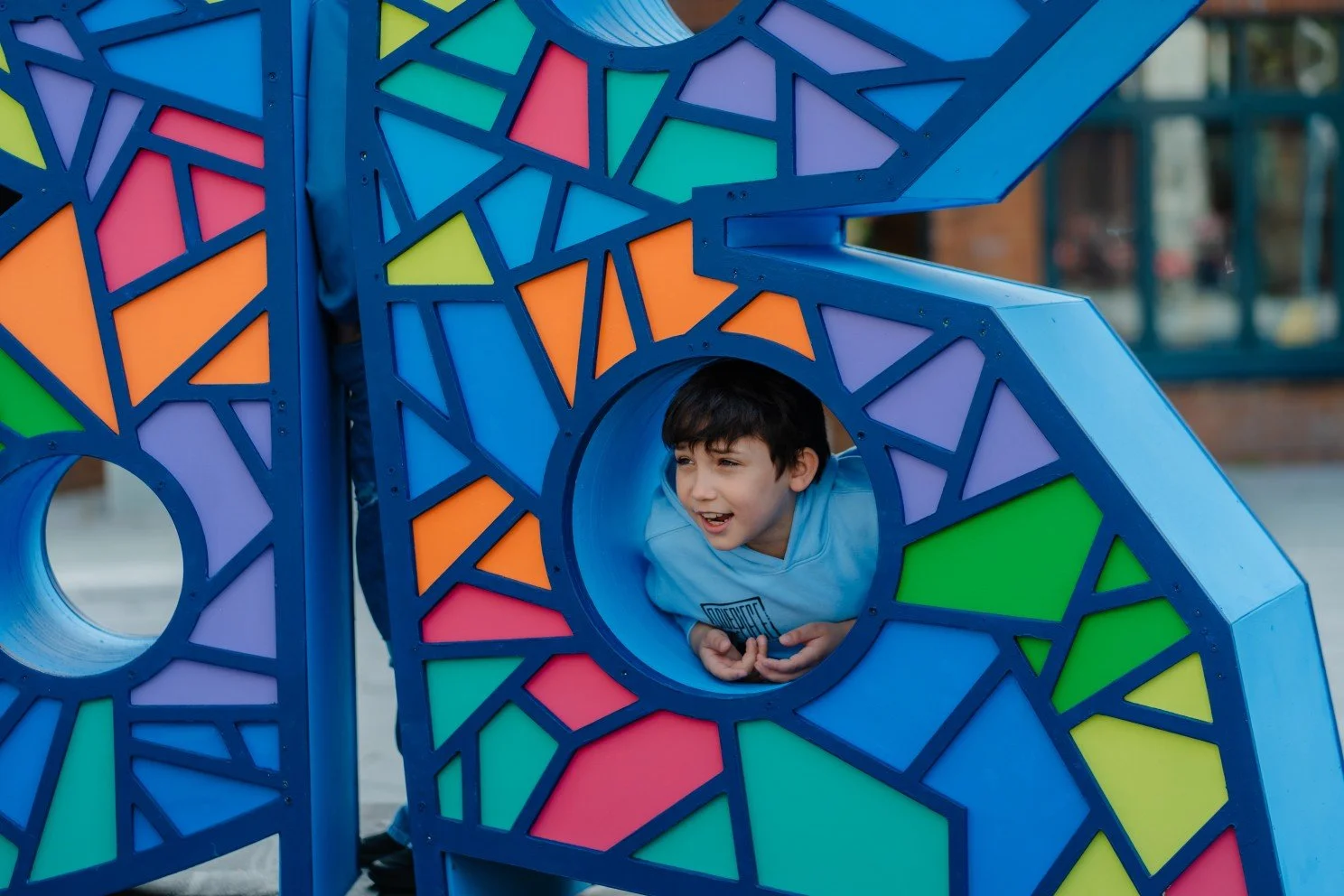10 Questions with Jia Jia
Al-Tiba9 Art Magazine ISSUE13 | Featured Artist
Jia Jia is a multi-media artist. She works primarily in installation, incorporating sculpture, video, and performance. Her practice uses satire and humor to imagine everyday objects anew. The work questions how globalization and a technologically saturated society influence the ideology of the individual and how the individual behaves in a society filled with contradiction and stimulation. She earned her BFA in Ceramics from the China Central Academy of Fine Arts and her MFA in Sculpture from the University of Washington. She was the recipient of the Boyer and Elizabeth Bole Gonzales Scholarship. Her work “Surplus Value” is currently exhibited at Slip Gallery in Seattle.
Jia Jia - Portrait
ARTIST STATEMENT
“I have lived in the United States for nearly five years. During this time, I went from initially learning about American culture, to striving to assimilate into American culture, to now searching for and creating my own voice and role within other cultures. As for my role, I always feel like an observer and outsider. Regardless of my own culture or American culture, I feel like I need to maintain a distance from them. This distance allows me to have a clearer and more rational understanding of myself and my environment, and it helps me to understand who I am, where I am, and what I need to establish in such an environment. But at the same time, I question whether this distance will make me distant from my own culture and the surrounding environment in a foreign land and if it will cause me to become isolated.
The distance has allowed me to gradually have a better understanding of the word "ordinary". As an artist, I have always felt special, but as I have grown older and gained more experience, I have realized that I am just an "ordinary person". "Everyone is ordinary, but every ordinary person is special." This has shifted my focus to the perspective of ordinary people, and I use my own identity to think about how capital exploits the labor of ordinary people, and how ordinary people contribute to the development of society with their cheap labor. In such an environment, how do they unite, help, and encourage each other? From this perspective, I started using clay, leftover leather, food, dictionaries, and a series of materials to create art and explore this issue.
Talking about "ordinary people" also reminds me of the concept of "products". I studied product design in my undergraduate program, where I learned how to design functional and comfortable products for users. After starting my artistic creation, I began to think about what the functionality of people is. What is the function of ordinary people in social development? Are ordinary people treated like products? In the rapidly developing globalization, not only do commodities flow around the world, but people also immigrate to different parts of the world for various reasons. We do contribute our abilities to the development of the surrounding areas like a product, but at the same time, we have subjective initiative. We bring our country's culture to foreign lands and re-establish a language and cultural system that belongs to us personally. These are the directions of my current artistic creation and research.”
— Jia Jia
“As a foreigner living abroad, Jia Jia questions herself how she can be an adapter for living; under the current globalization, how she understands herself as a product to be inefficient and non-productive; in the cultural digesting process, how she resists the power and violence in a subtle way.”
Digestive System (detail), Clay, stainless steel, shredded dictionary pages, plastic, cloth, zipper, hair cutting scissors, transparency film, fishing wire, 20x14x55 in., 2022 © Jia Jia
INTERVIEW
First of all, introduce yourself to our readers. How would you define yourself in three words?
Hello, my name is Jia Jia. I was born and raised in China, and I currently live and work in the United States. I am a multimedia artist specializing in installation, sculpture, video, and performance. I would choose adaptable, emotional, and unrealistic to define myself.
What helped you become the artist you are today, both in terms of personal experiences and studies?
Ever since I was young, I have been drawn to the objects and things around me, constantly attempting to capture what I see through drawing. I believe my natural curiosity fuels my desire to express my thoughts and ideas visually.
As I reflect on my educational journey, I realize that my passion for creating visual art has been a constant throughout my life. I remember taking painting classes since the age of six, which further intrigued my interest in visual language. While pursuing my undergraduate degree in design, I had the opportunity to travel to Jingdezhen, China, and participate in an exchange program at Alfred University Ceramics Department. These experiences exposed me to a vibrant art scene and ultimately inspired me to pursue a career as an artist.
Redefine, Clay, Curved Pean hemostat Forceps, shredded Oxford Dictionary pages, 6x8x48 in., 2022 © Jia Jia
Redefine (detail), Clay, Curved Pean hemostat Forceps, shredded Oxford Dictionary pages, 6x8x48 in., 2022 © Jia Jia
You are currently living in the US, which has influenced your art practice significantly. In your statement, you say, "I always feel like an observer and outsider. Regardless of my culture or the American culture, I feel like I must maintain a distance from them." How is this feeling reflected in your work?
There is a peculiar aspect to my creative process where I cannot immediately feel or formulate clear thoughts about my work right after finishing it. I find it necessary to leave my work behind for a while, allowing myself time to digest and reflect upon my ideas and the relationship between different pieces. I can't immerse myself too deeply in work - I need to step away from it. Sometimes, I can describe my work with a few words, but other times I cannot. I find that taking time and distance from my work allows me to better understand not just my creations but also myself. This process is akin to cooking a hotpot; I like to let my favorite ingredients boil together, letting their flavors intermingle, and the broth becomes rich and full-bodied. Once the ingredients are ready, I carefully taste and savor each one, remembering its unique qualities. I believe that taking time and distance with things allows me to gain a deeper appreciation and understanding of them.
What are the messages you would like to explore and communicate about your work? And how do these influence your choice of subjects and materials to work with?
As a foreigner living abroad, I question myself how I can be an adapter for living; under the current globalization, how I understand myself as a product to be inefficient and non-productive; in the cultural digesting process, how I resist power and violence in a subtle way. Those are the topics I would like to explore and communicate in my work.
Based on these topics, I enjoy working with materials that have both functional and artistic qualities, such as clay, leather, and medical equipment. I am particularly drawn to widely recognizable materials with a universal language that people from different cultures can understand. These materials are integral to our daily lives, often appearing soft and useful on the surface, but potentially dangerous if misused, as with electronic devices. By utilizing such materials in my work, I aim to create pieces that can resonate with a diverse audience, while also exploring the complex relationship between humans and the objects we interact with.
Redefine, Clay, plastic, stainless steel, phone charging cords, hair cutting scissors, shredded dictionary pages, foam, cloth, 40x34x75 in., 2022 © Jia Jia
Your personal experiences highly influence your work. How do you work on these experiences, and how do you incorporate them into your work?
Based on my personal experiences, I carefully consider the issues that influence me most and strive to address them in my artwork. The selection of materials in my artwork is similarly informed by my personal experiences. For instance, while traveling to different countries, I frequently require an adapter for my electronic devices due to varying power sources. This experience sparked my interest in incorporating adapters into my artwork as a way of exploring themes of adaptation, cultural assimilation, and cross-cultural communication. Through my work, I aim to capture the complexities of being a foreigner in a new environment and the challenges and rewards of embracing diversity and multiculturalism.
You work with several mediums: installation, sculpture, video, and performance. How do you choose which one is more appropriate for a certain project?
When deciding which medium to use for a project, I always start by considering the concept. I believe that different concepts require different mediums to effectively communicate their message. Additionally, I take into account how the audience will perceive and understand the work. For example, in my project "Make Your Will the Will of the Universe," I had already chosen the materials and objects that I wanted to use. However, to convey the absurd interaction between these objects, it was essential to perform the interaction in front of the audience. This live performance helped the audience to better understand the concept, which was more effective than a written description.
Surplus Value, Leather, thread, clay, wood, curved Pean hemostat Forceps, shredded Oxford Dictionary pages, 30x22x5 in., 2022 © Jia Jia
Surplus Value (detail), Leather, thread, clay, wood, curved Pean hemostat Forceps, shredded Oxford Dictionary pages, 30x22x5 in., 2022 © Jia Jia
And how do you work on each specific medium? Do you find any difference in your approach to art based on the medium you use?
Different artistic mediums require distinct processes to incorporate them into artworks. For instance, when I plan to create a sculpture, I usually start with a simple sketch and then produce numerous small samples to experiment with different materials and techniques. However, when preparing for a performance, I typically engage in extensive writing. I list all of my concepts and ensure they flow logically before I begin rehearsing several times before the actual performance. The diverse ways of making my art allow for more possibilities and approaches to my artistic practice. This approach enriches my content and helps my art evolve in significant ways.
Is there anything else you would like to experiment with?
There are a multitude of materials I wish to experiment with in my art practice, including glass and wood. My practice is driven by two key aspects: materials and ideas. Either can take the leading role in a piece.
Until, Leather, thread, stanchions, paper tag, video, 55x13x38 in., 2022 © Jia Jia
Digestive System, Clay, stainless steel, shredded dictionary pages, plastic, cloth, zipper, hair cutting scissors, transparency film, fishing wire, 20x14x55 in., 2022 © Jia Jia
Let's talk about the future; what do you hope to accomplish this year regarding career goals and personal life?
In terms of my career goals, I hope to expand my exhibition venues this year, particularly on the East Coast. Additionally, I aim to increase my productivity in the studio and obtain more opportunities to experiment with my installations through various shows. As for my personal life, I would love to revisit Hawaii this year!
Finally, what are you working on right now? Any new projects you would like to share with our readers?
I am working on a wall series, "Before and After Digestion," right now. In this series of works, I use recycled terra cotta clay that carries a rich cultural history. As a Chinese artist, ceramics have played a significant role in my culture, where porcelain and perfect vessel making are often emphasized. However, I chose to focus on the imperfectness of clay and the deeper meaning behind it. Terra cotta has been used by many ancient cultures around the world to construct their civilization, with its color evoking a sense of flesh and humanity, reminding us of the anonymous people who built these civilizations. The tangled and reshaped clay body in the work represents my re-imagination of personal experiences, highlighting how I have inherited and been influenced by my own culture and how I have carried and digested it in a new foreign environment. Through the use of clay, I express a deeply personal and introspective exploration of their cultural identity and experiences.
























